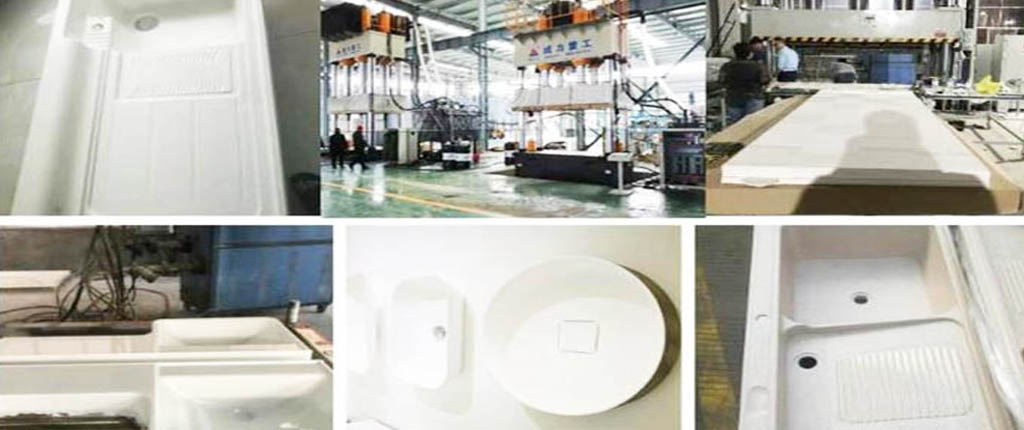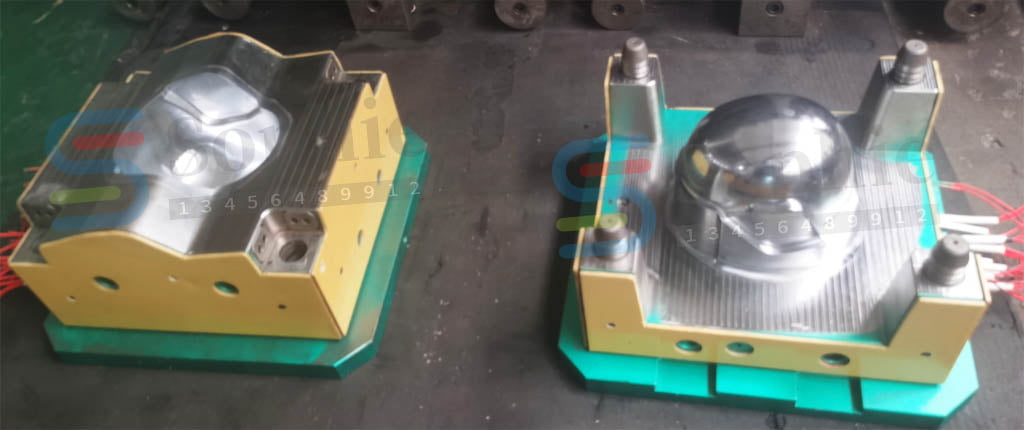What is precautions for glass fiber molding mold? With the improvement of living standards these years,therefore, people put forward higher requirements for the product performance of FRP materials. In order to enhance the safety and artistry of glass, manufacturers have launched many new glass products, which are powerful and attractive. For example, the dimming glass that can control the transparency with on and off is more practical than the traditional frosted glass. Next, see what steel is used to make glass molds to learn about it.Manufacturing fiberglass products often involves the use of forming molds, here are some things to keep in mind when using fiberglass forming molds:
Table of Contents
ToggleWhat is precautions for glass fiber molding mold
1. Material selection
Choose the mold material suitable for glass fiber molding. Commonly used materials are metal, silicone, polyurethane, etc. Mold materials should have high temperature resistance, wear resistance and chemical resistance to ensure long-term stable service life.
2. Smooth surface
The surface of the mold should be kept smooth to ensure the quality and smoothness of the surface of the molded product. Unevenness of the mold surface may lead to surface defects of the product, affecting appearance and performance.
3. Release agent
Appropriate release agent should be applied before using the mold. Mold release agents help prevent the fiberglass from sticking to the mold, making demoulding easier.
4. Mold design
The design of the mold should meet the geometric shape and size requirements of the product. Make sure the mold is strong and rigid enough to resist pressure and stress during the molding process.
5. Heat balance
Before starting molding, make sure the mold is in proper heat balance. The uniformity of mold temperature is critical to both the molding process and the quality of the finished product.
6. Mold Maintenance
heck and maintain the mold regularly to prevent deformation or damage due to service life and wear. Keep the mold clean and pay attention to anti-rust measures.
7. Appropriate molding conditions
During the molding process, parameters such as temperature, pressure, and molding time are well controlled to ensure the stability and consistency of the finished product quality.
8. Avoid excessive stretching
During the molding process, avoid excessive stretching of glass fibers, so as not to cause fiber breakage or uneven distribution, which will affect product performance.
9. Prevent air bubbles
Make sure there are no air bubbles in the mold, especially when using liquid resin, air bubbles may cause holes and weaknesses in the product.
10. Safe operation
When using the mold, pay attention to safe operation to avoid injury or damage to the mold.

In short, the correct selection, use and maintenance of fiberglass forming molds are important factors to ensure the manufacture of high-quality fiberglass products. Regular inspection and maintenance of the mold, following the correct operating procedures, can prolong the life of the mold and improve the quality of the product.
What material is the fiberglass mold made of
(1). Cold work mold steel
Cold work mold steel is used to manufacture moulds that press and forming workpieces in a cold state. Such as: cold blanking dies, cold stamping dies, cold drawing dies, imprinting dies, cold extrusion dies, thread pressing dies and powders Pressing dies, etc. The range of cold work die steel is very wide, from various carbon tool steels, alloy tool steels, high speed tool steels to powder high speed tool steels and powder high alloy die steels. Cold work die steels are vacuum degassed Steelmaking, pure internal quality, good machinability, significantly improved cutting, good hardenability, air-cooled hardening is not prone to quenching cracks, excellent wear resistance, good toughness, can be used as a blanking die for stainless steel and high-hardness materials .
(2). Hot work mold steel
Hot work die steel is mainly used to manufacture dies for pressure processing of workpieces at high temperature. For example: hot forging molds, hot extrusion molds, die casting moulds, hot upsetting mold, etc. Commonly used hot work die steels include medium and high carbon content Alloy die steel with the addition of Cr, W, Mo, V and other alloying elements; for hot work die steel with special requirements, sometimes high-alloy austenitic heat-resistant die steel is used.
(3). Carbide tungsten steel
Tungsten carbide, also known as cemented carbide, refers to a sintered composite material containing at least one metal carbide. Tungsten carbide, cobalt carbide, niobium carbide, titanium carbide, and tantalum carbide are common components of tungsten steel, with high hardness, A series of excellent properties such as wear resistance, good strength and toughness, heat resistance and corrosion resistance, especially its high hardness and wear resistance, remain basically unchanged even at a temperature of 500 ° C, and still remain at 1000 ° C. High hardness. Tungsten steel is named as the teeth of modern industry. Tungsten steel products are widely used for cutting cast iron, non-ferrous metals, plastics, chemical fibers, graphite, glass, stone and ordinary steel, and can also be used for cutting Heat-resistant steel, stainless and high manganese steel, tool steel and other difficult-to-machine materials. The cutting speed of the new cemented carbide is hundreds of times that of carbon steel.
(4). Carbon mold Steel
Carbon steel used to make cutting tools, molds and measuring tools. Compared with alloy tool steel, it has good workability, low price and wide range of use, so it is used in a very large amount in tool production. Carbon tool steel is divided into carbon steel Cutting tool steel, carbon die steel and carbon measuring tool steel. Carbon cutting tool steel refers to carbon tool steel used to make cutting tools, carbon tool steel refers to carbon tool steel used to make cold and hot working molds, carbon Measuring tool steel refers to carbon tool steel used to make measuring tools.

Points to note for fiberglass forming molds
When the glass is formed, the temperature of the glass liquid is very high, reaching 1300-1400C, and it is also about 1060C when it enters the molding. The temperature of the surface of the forming mold cavity will reach 600-800C. The mold is often oxidized, peeled, and grown. Large area of pitting, and due to the mechanical impact of mold clamping, material clamping, stress deformation and other factors, the mold clamping line is thick, resulting in product scrap, so the glass forming mold has higher requirements for mold materials.
It is introduced on the Internet that this new type of special steel HQ-40 is a steel for pre-hardened glass forming molds. The forging temperature of the steel is 1150-850C, the forging is annealed at 850-860C, the furnace is cooled to 350C and air-cooled, and the aging treatment temperature is After 14 hours at 670-680C, it can be air-cooled and the hardness can reach HRC25-26. The pre-hardened forgings provided by the above-mentioned materials can be directly used for glass forming without chrome plating after machining. HQ-40 Steel has good cold and hot processing properties, high cold and hot fatigue resistance, good soothing response ability, excellent thermal contact resistance, high glass adhesion temperature and good mold release and can be used. The performance of HQ-40 steel is better than that of Japanese GLD29 (CR-CO-V series) steel, and the cost of steel is only 3/5 of that of GLD2. HQ-40 steel is suitable for making glass bottles, cans, glassware, Forming molds for picture tube glass bulbs, vehicle lamps, lighting fixtures, etc., especially for glass forming molds with high glass melting temperature, high forming temperature and high surface quality requirements. For example; HQ-40 steel punch , After the base and the mold are machined and ground, the surface roughness can reach RA0.13 (10.9), which is used for pressing and molding at a temperature of 1400C. The surface roughness of the punch and the base is RA0.35 (9) The mold can still be used, and the working surface of the punch and the base has no defects such as orange peel, pits, cracks, and oxide skin.


